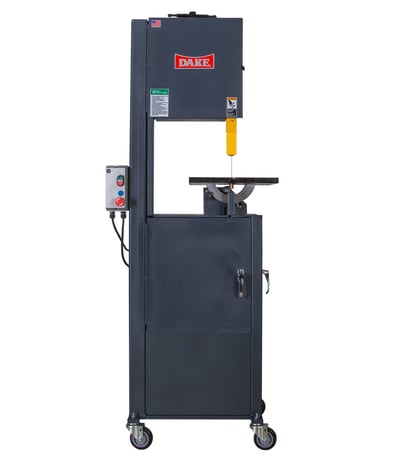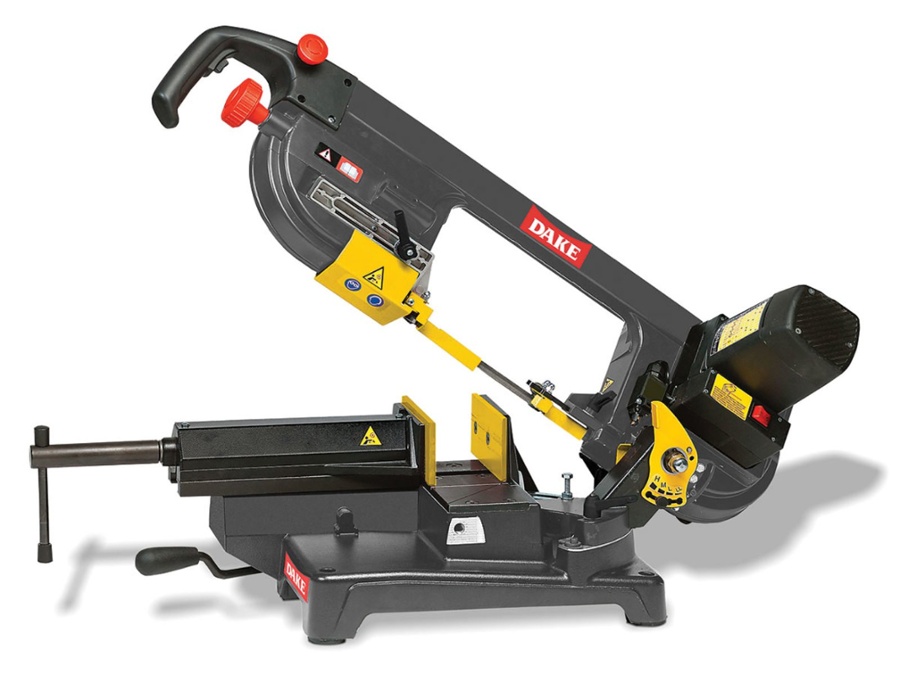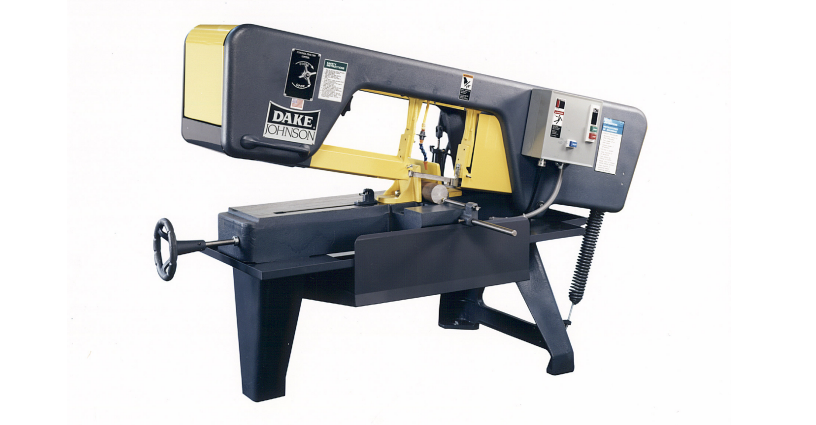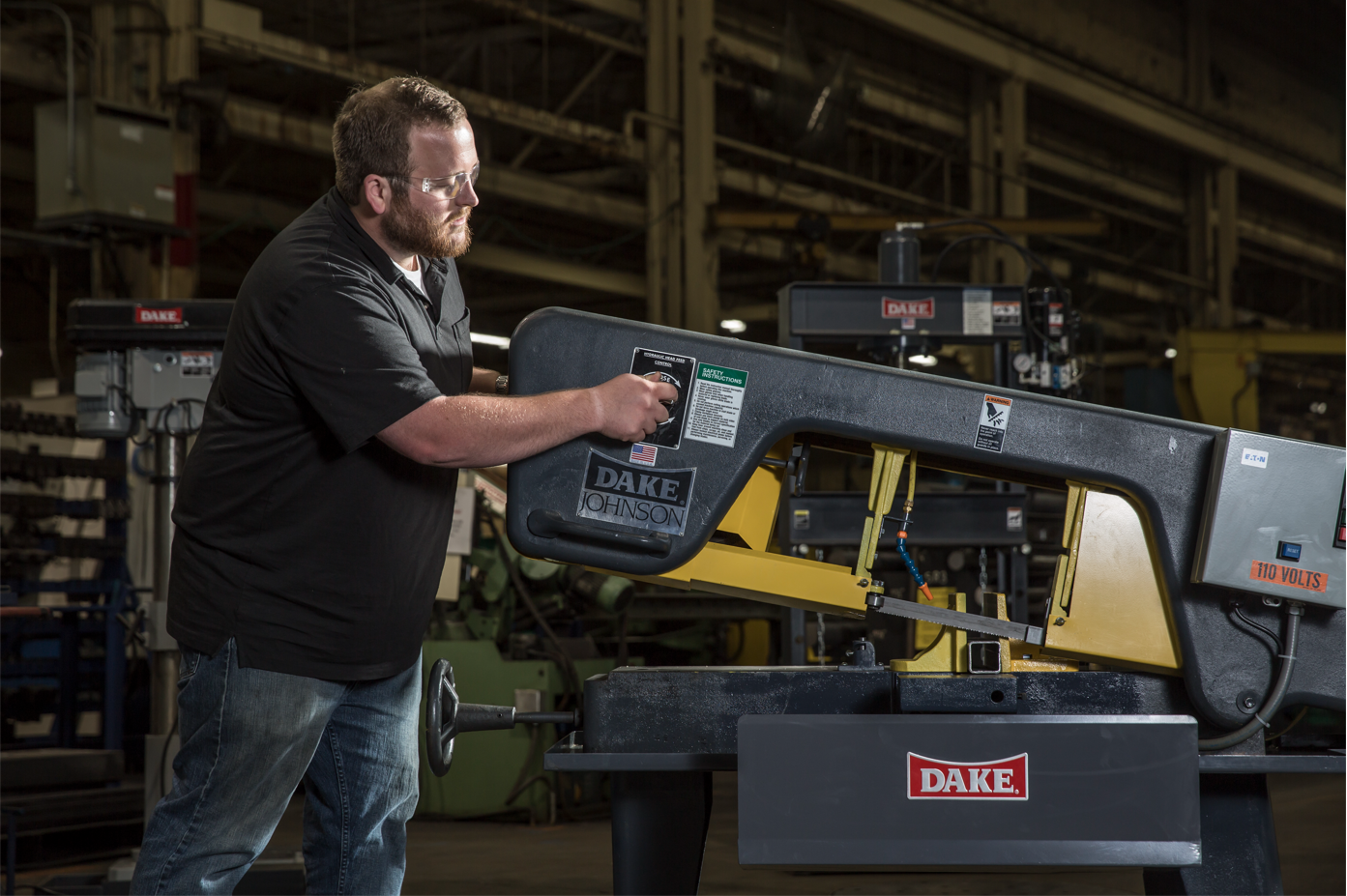They contain a lot of moving parts, and they are used to slice through metals like a hot knife through butter. The daily stress put on these machines is much more intense than an arbor press, for example.
So, these machines need some tender loving care (TLC) every now and then. In this handy guide, our experts here at Dake will give you step-by-step instructions on how to properly care for your bandsaw.
The Benefits of Proper Maintenance
Ensure that you perform the appropriate maintenance on your vertical or horizontal bandsaws. This is a preventative measure that can help you avoid more costly problems in the future. It also helps to boost productivity levels, improve the lifespan of the bandsaw blade, produce higher quality cuts, and even reduces the downtime of the machine.
Think of it this way, chefs sharpen their knives regularly so that they can cut meats, vegetables, and other food products with ease and precision. A dull knife can lead to a very messy cutting board and some haphazardly sliced pieces of produce.
While the average household may not sharpen their knives often, professional chefs are expected to maintain a clean edge of their bladed tools.
The same can be said for metalworkers using bandsaws. Whether you prefer a vertical or horizontal model, the same thing can be said of both. They need to be tended to regularly in order to perform at their best.
Bandsaw Maintenance
The first thing to note before you undertake any sort of maintenance for these heavy machines is that you must follow the guidelines presented in the owner’s manual and follow all appropriate safety procedures.
The bandsaw blade should go through a tension test every day. Do not skip this step and start up the machine without checking it over once. If you need to change the blade (read our how-to post here), be sure to follow the tension guidelines as seen in your owner’s manual.
Before you remove the blade, take a look at the tracking. The wheel flange and the rear edge of the blade should be one-eighth of an inch apart. If they are closer together or further apart, you need to adjust the spacing before you remove the blade.
Other things you need to inspect daily include the oil level and the hydraulics system. Be sure that there is plenty of lubrication and that there is no buildup or residue left behind on the bearings. You also need to ensure that the chip removal system has a properly working conveyor to get rid of all of the debris. All fluids must be monitored daily as well.
Every time you change out the blade on your bandsaw, you need to check the alignment of the bank wheels as well. This will ensure that blade is rotating smoothly when in use. About every six months, you also need to inspect the wheel bearings to see if there is any unusual movement. If you notice something is off, replace the bearings.
As for band guides, they should be thoroughly inspected every six months. You can learn how to install new ones by looking at your owner’s manual. Drives should also be monitored about every six months.
Additional areas to inspect include the transmission oil level, bearings, seals, drive wheel, pulleys, belts, and vises. Top off the transmission oil if it’s low, replace damaged seals and bearings, and make sure the drive wheel isn’t overly worn down.
Pulleys should all be aligned and at the appropriate tension with minimal signs of wear. Belts should be free of cracks and stretch marks, and both the movable and stationary vises should have minimal wear in order to pass the inspection. Also, keep in mind that the vises need to be aligned to the bandsaw blade and adjusted as needed.
We also recommend that you monitor the maximum and minimum band speeds every week to ensure consistency.
Dake Vertical Bandsaws
In our product pages, you will find four different types of vertical bandsaws. We’ve got six various machines to choose from spanning across the following categories: 14-10 Series, Industrial, Trademaster, and Work-A-Matic.

14-10 Series
We designed these machines to fit a variety of metal cutting needs. Each model is built with a cast iron base that reduces vibrations and allows for more precise cutting.
Dake Horizontal Bandsaws
On the other hand, we've also got four different categories for our horizontal bandsaws. You can choose from nine unique models spanning across the following categories: benchtop, standard-duty, heavy-duty, and mitering.
Designed with double frame construction, these tend to be the most reliable bandsaws on the market. We’ve been manufacturing these since 1941, so our horizontal bandsaws have set the bar high for competitors.
If you happen to choose one of the two benchtop horizontal bandsaws, then you might also want a work stand to go with that. Our portable work stand is made out of heavy-duty steel tubing, but it is lightweight and collapsible.
You can take it anywhere you go, and it folds flat when it’s not in use. With the ability to hold 110 pounds, it’s the perfect companion to our benchtop bandsaw models.
Learn with Dake
If you have other metalworking machines from Dake, we highly recommend that you take a look at our maintenance guide for presses. Follow along to maintain your press machines and keep them in perfect working order.
You can also further educate yourself on our machines by watching our informative videos in our free online video library.
Get in Touch
Want to learn more about Dake or request a customized machine for your next metalworking project? You can do both right now by filling out our simple contact form online. One of our experts will get in touch with you shortly.
-1.jpg?width=1200&height=525&name=DAKE003_%20Logos_Red%20(002)-1.jpg)


